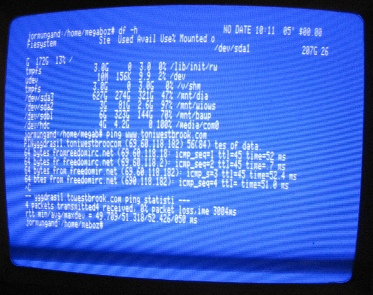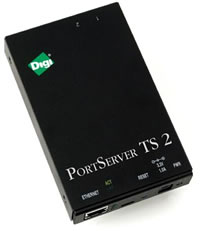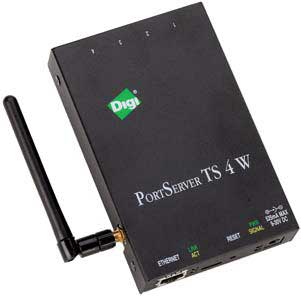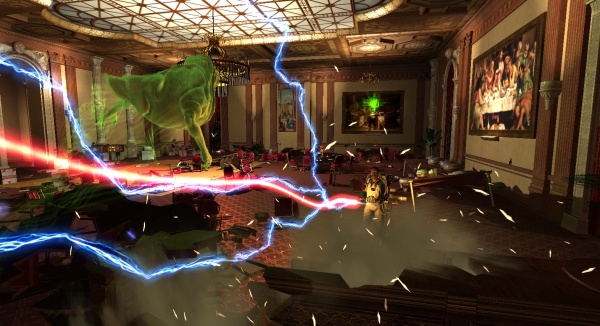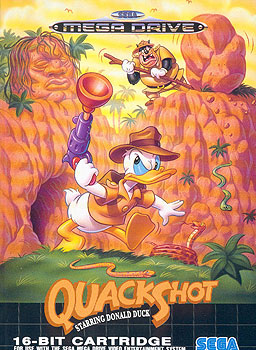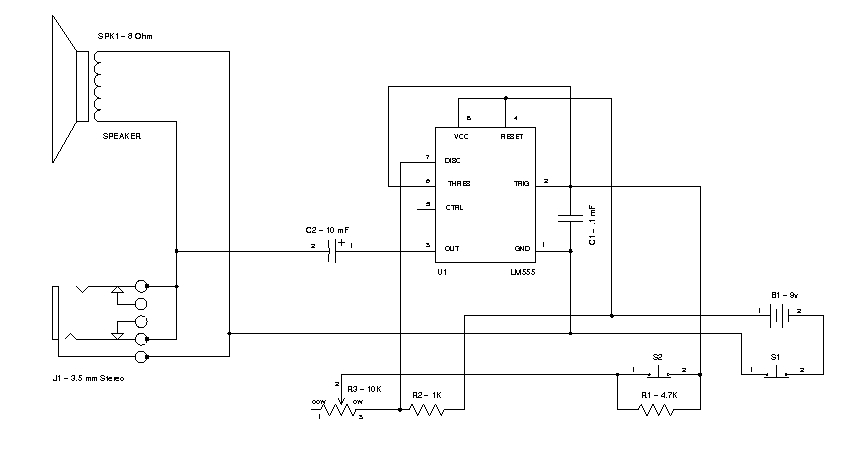A lengthy title, but one of the most memorable lines from one of the greatest computer games ever created. I speak, of course, of “The Secret of Monkey Island”, a point-and-click adventure released by LucasArts (then Lucasfilm Games) in 1990. For the uninitiated, The Secret of Monkey Island and its 3 subsequent sequels chronicle the adventures of Guybrush Threepwood, a slightly bumbling but well-intentioned swashbuckling neophyte in his quest to become a pirate. 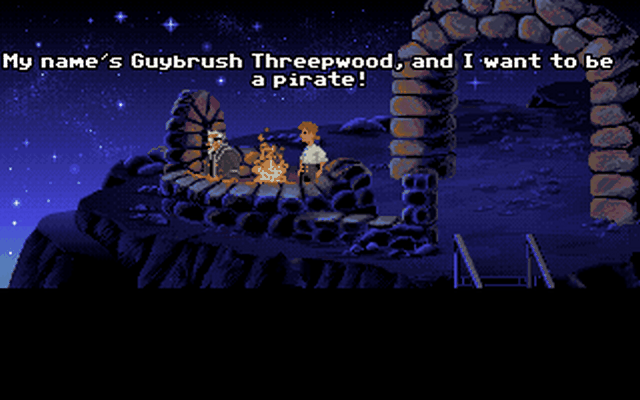 Along the way he fights the undead pirate LeChuck and marries the beautiful Elaine Marley, governor of Melee Island. If you haven’t played these games, do yourself a major favor and purchase them right away – they are some of the most enjoyable and funny games ever made, thanks for the genius of the game’s original creator, Ron Gilbert.
Along the way he fights the undead pirate LeChuck and marries the beautiful Elaine Marley, governor of Melee Island. If you haven’t played these games, do yourself a major favor and purchase them right away – they are some of the most enjoyable and funny games ever made, thanks for the genius of the game’s original creator, Ron Gilbert.
A New Chapter
Until recently, the last game to come out of the Monkey Island franchise, slightly before LucasArts had decided that adventure games were no longer profitable, was “Escape From Monkey Island” in 2000. Nearly a decade later, many fans had lost hope of there ever being a continuation in the series. There were a few home brew attempts at games, and lots of artwork, fiction, and messages back and forth, but never an official title… Until now.
Telltale Games (My favvvorrite developer), in cooperation with LucasArts, has released the first in a series of 5 episodic games, continuing the Monkey Island saga. I recently completed the first chapter, “Launch of the Screaming Narwhal”, and as a long-time, die-hard fan who has been with the series since the beginning, I can honestly say that this is a gaming dream come true.
A True Return to Monkey Island
Telltale continues to take classic IP and do the job right. We see the full cast of characters return for the new game, with much of the original voice cast, including Dominic Armato as Guybrush Threepwood. The locations and storylines are right on, with LeChuck again causing mayhem upon the seas deep in the Caribbean. Telltale makes use of their “Telltale Tool” and game engine, and I have to say, it looks fantastic. One of the issues I had had with the fourth in the Monkey Island series was a jump to 3D graphics when 3D wasn’t visually there yet. When comparing the beautiful cartoon illustrations of the third game to the blocky, polygons of the fourth, it just seemed ugly. But no longer is this the case – Telltale did another bang-up job and beautifully rendering both the environment and characters.
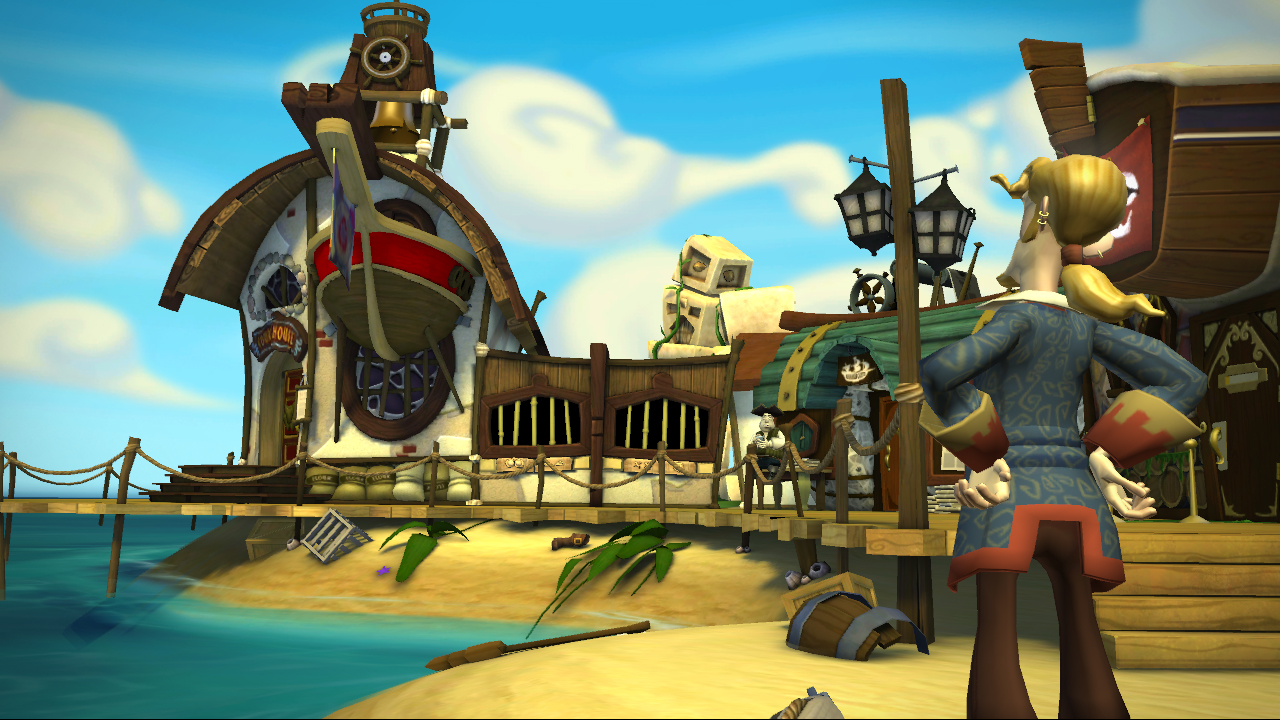
Guybrush Admires Flotsam Island
Look Behind You! A Three-Headed Monkey!
The true test of any adventure game is the puzzles, and in Monkey Island’s case, the laugh factor. Launch of the Screaming Narwhal does a great job at both, though the puzzles are probably easier than the those found in the rest of the series, due to the length of episodic games. I only found myself majorly stuck once, and after taking a night’s break and coming back, I figured it out fairly quickly. I did find myself smiling and laughing quite a bit though, and definitely felt like I was experiencing a true MI game. The jokes were very “Guybrush”, true to his nature.
Issues
One thing a lot of people had moaned and groaned about on the forums was the control scheme. Telltale has chosen to control Guybrush using the Wallace and Gromit scheme, which means use of the keyboard as opposed to clicking for his destination. Many have gone so far as to declare such a control scheme would ruin the game. While everyone is entitled to their opinion, I found this kind of silly, especially since using the keyboard is not that bad, and probably works better considering all the camera movement there is in the game (well done movement). I did notice Telltale added in a secondary control scheme using the mouse to point in the direction you want your character to go, but honestly I preferred the keyboard.
Really, I had no qualms with the game at all, except the ongoing issue of voice volume – for whatever reason, Telltale continually sets their music much too high to make out what is being said during scenes with a musical score. But after a quick re-adjustment to the music volume, all is good again.
Like all TTG productions, I highly suggest you check it out (on PC or Wii), even if you’re new to the series. Need more convincing? Check out the trailer!
Visit Telltale Games!

